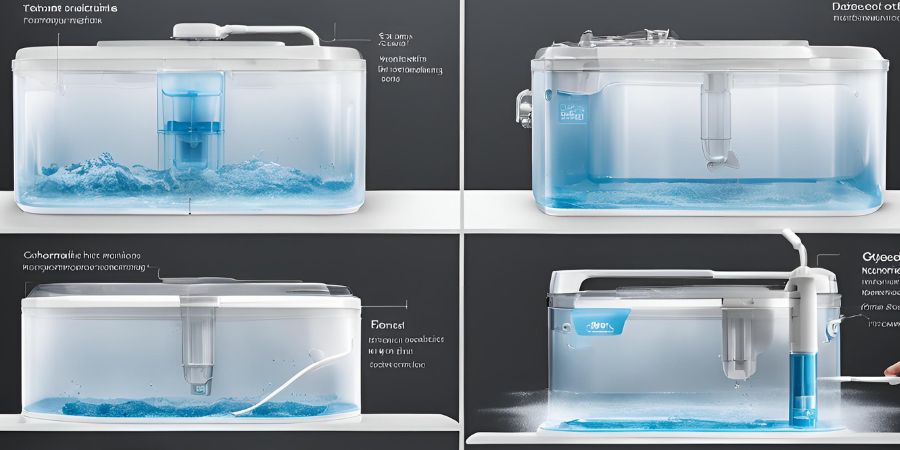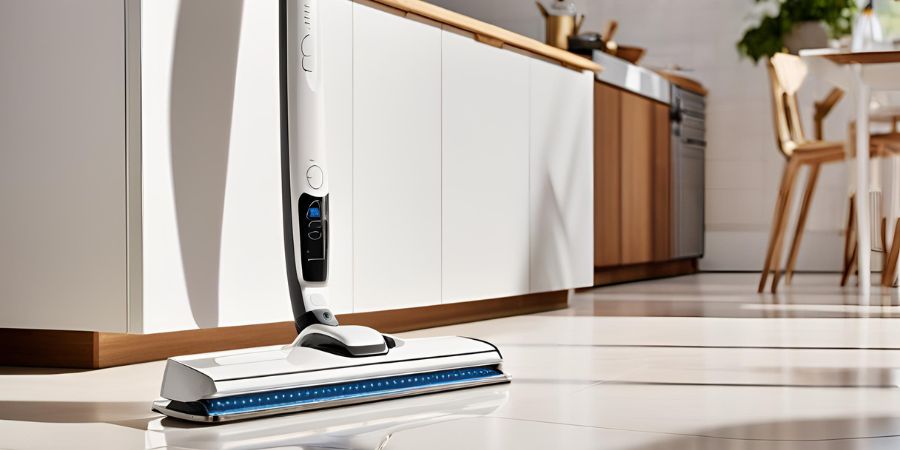Keeping your Tineco vacuum cleaner in top condition is essential for maintaining its performance and longevity. One of the most critical aspects of maintenance is cleaning the Tineco clean water tank. Over time, the water tank can accumulate dirt, debris, and bacteria, which can affect the efficiency of your device and even lead to unpleasant odors. In this comprehensive guide, we’ll walk you through the process of cleaning your Tineco clean water tank effectively, ensuring your vacuum stays in pristine condition.
Why Cleaning the Tineco Clean Water Tank is Important
Before diving into the cleaning process, it’s essential to understand why maintaining the Tineco clean water tank is crucial. The water tank is a core component of your Tineco vacuum, especially if you own a wet-dry model. It holds clean water for mopping and collects dirty water after cleaning. If not cleaned regularly, the tank can become a breeding ground for bacteria and mold, leading to:
- Reduced cleaning performance
- Unpleasant smells
- Potential damage to the vacuum’s internal components
- Health risks due to bacteria buildup
By cleaning the Tineco clean water tank regularly, you can ensure optimal performance, extend the lifespan of your device, and maintain a hygienic cleaning environment.
Tools and Supplies You’ll Need
To clean your Tineco clean water tank effectively, gather the following tools and supplies:
- Mild dish soap – Avoid harsh chemicals that could damage the tank.
- Warm water – Helps dissolve dirt and grime.
- Soft-bristled brush or sponge – Prevents scratches on the tank’s surface.
- Microfiber cloth – For drying and polishing.
- White vinegar or baking soda – Natural cleaning agents for removing stubborn stains and odors.
- Toothbrush – For cleaning hard-to-reach areas.
- Gloves – Optional, to protect your hands during cleaning.
Step-by-Step Guide to Cleaning the Tineco Clean Water Tank

Follow these steps to clean your Tineco clean water tank thoroughly:
Step 1: Empty the Water Tank
Start by removing the water tank from your Tineco vacuum. Carefully pour out any remaining water from the tank. If your model has separate clean and dirty water tanks, ensure both are emptied completely.
Step 2: Disassemble the Tank
Most Tineco water tanks are designed for easy disassembly. Remove any detachable parts, such as filters, caps, or seals. Check the user manual for specific instructions related to your model.
Step 3: Rinse with Warm Water
Rinse the tank and its components under warm running water to remove loose dirt and debris. Avoid using hot water, as it may warp plastic parts.
Step 4: Clean with Mild Soap
Add a few drops of mild dish soap to the tank and fill it with warm water. Use a soft-bristled brush or sponge to scrub the interior and exterior of the tank. Pay special attention to corners and crevices where dirt can accumulate.
Step 5: Tackle Stubborn Stains and Odors
If you notice stubborn stains or odors, create a natural cleaning solution using white vinegar or baking soda. For vinegar, mix equal parts water and vinegar, then soak the tank for 15-20 minutes. For baking soda, make a paste with water and apply it to the stained areas. Scrub gently with a toothbrush.
Step 6: Clean the Filters and Seals
Remove any filters or seals and clean them separately. Rinse them under warm water and allow them to air dry completely before reassembling.
Step 7: Rinse and Dry Thoroughly
After cleaning, rinse the tank and its components thoroughly to remove any soap or cleaning solution residue. Use a microfiber cloth to dry the tank and ensure no moisture remains, as this can lead to mold growth.
Step 8: Reassemble the Tank
Once all parts are completely dry, reassemble the water tank and reattach it to your Tineco vacuum. Ensure all components are securely in place to prevent leaks during use.
Tips for Maintaining Your Tineco Clean Water Tank

To keep your Tineco clean water tank in excellent condition, follow these maintenance tips:
- Clean After Every Use – Make it a habit to empty and rinse the tank after each cleaning session.
- Avoid Stagnant Water – Never leave water in the tank for extended periods, as this can lead to bacterial growth.
- Inspect Regularly – Check the tank and its components for signs of wear or damage, such as cracks or leaks.
- Replace Filters as Needed – Follow the manufacturer’s guidelines for replacing filters to maintain optimal performance.
- Use Clean Water – Always use clean, filtered water in the tank to prevent mineral buildup.
Common Mistakes to Avoid
While cleaning your Tineco clean water tank, avoid these common mistakes:
- Using Harsh Chemicals – Abrasive cleaners can damage the tank’s surface and internal components.
- Skipping Drying – Failing to dry the tank thoroughly can lead to mold and mildew growth.
- Ignoring Filters – Neglecting to clean or replace filters can reduce the vacuum’s efficiency.
- Overlooking Seals and Gaskets – These small components can harbor dirt and bacteria if not cleaned properly.
Frequently Asked Questions (FAQs)
1. How often should I clean my Tineco clean water tank?
It’s recommended to clean the tank after every use to prevent dirt and bacteria buildup. For deep cleaning, aim to do it at least once a month.
2. Can I use bleach to clean the water tank?
No, bleach is too harsh and can damage the tank’s plastic components. Stick to mild soap, vinegar, or baking soda for safe and effective cleaning.
3. What should I do if my water tank develops a foul odor?
Use a vinegar solution or baking soda paste to eliminate odors. Ensure the tank is thoroughly dried after cleaning to prevent future odors.
4. Can I put the water tank in the dishwasher?
Most Tineco water tanks are not dishwasher-safe. Hand washing is the safest method to avoid damage.
5. Why is my water tank leaking after cleaning?
Leaks may occur if the tank is not reassembled correctly. Double-check that all components, including seals and filters, are properly installed.
Conclusion
Cleaning your Tineco clean water tank is a simple yet essential task that ensures your vacuum operates efficiently and lasts for years to come. By following the steps outlined in this guide, you can keep your water tank free from dirt, bacteria, and odors. Regular maintenance not only enhances the performance of your Tineco vacuum but also contributes to a cleaner and healthier home environment. So, take a few minutes after each use to care for your Tineco clean water tank – your vacuum (and your floors) will thank you!



